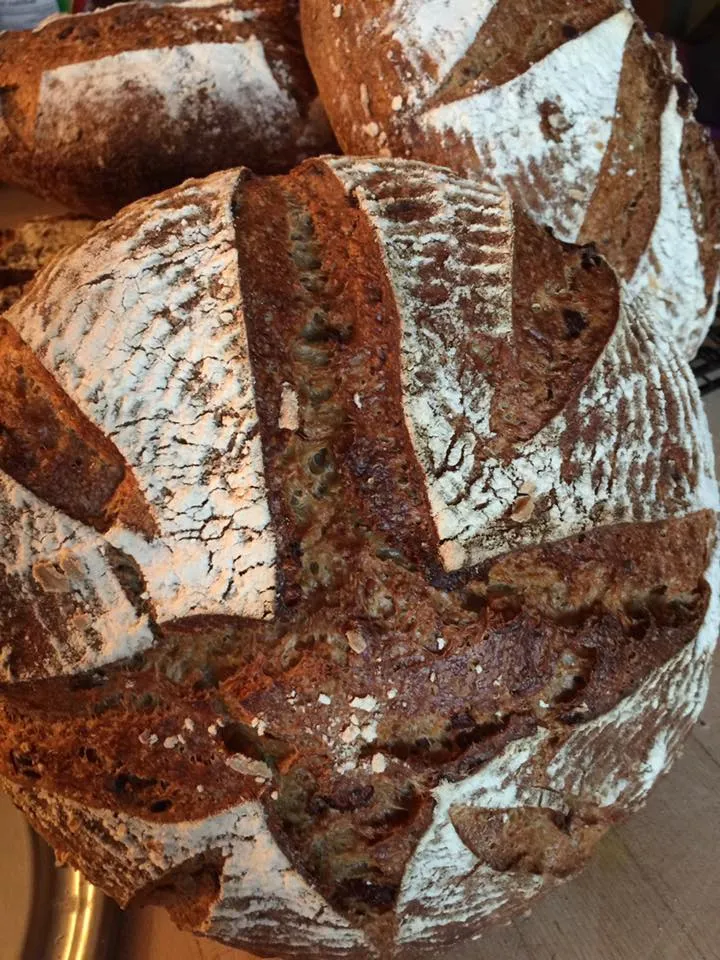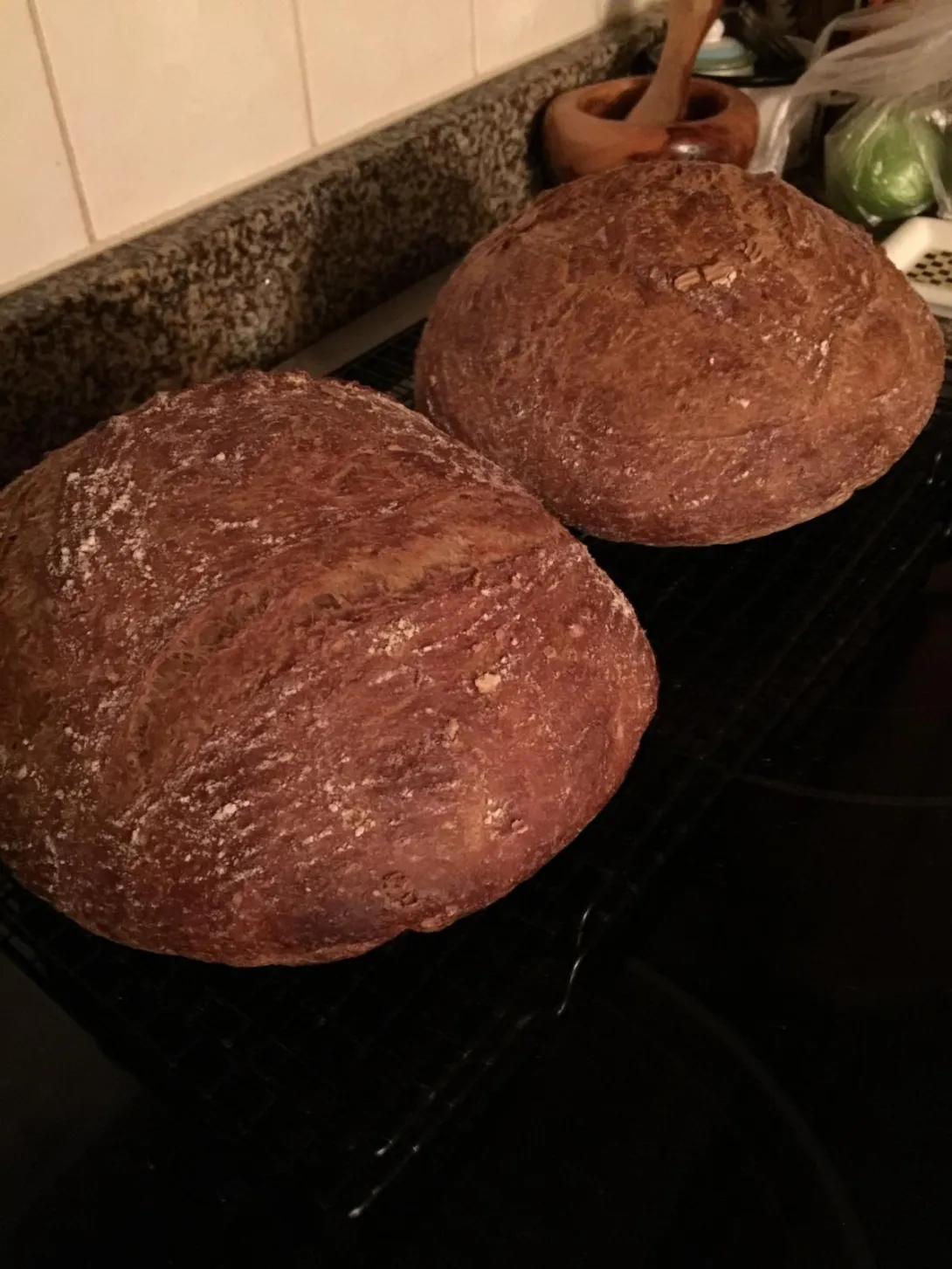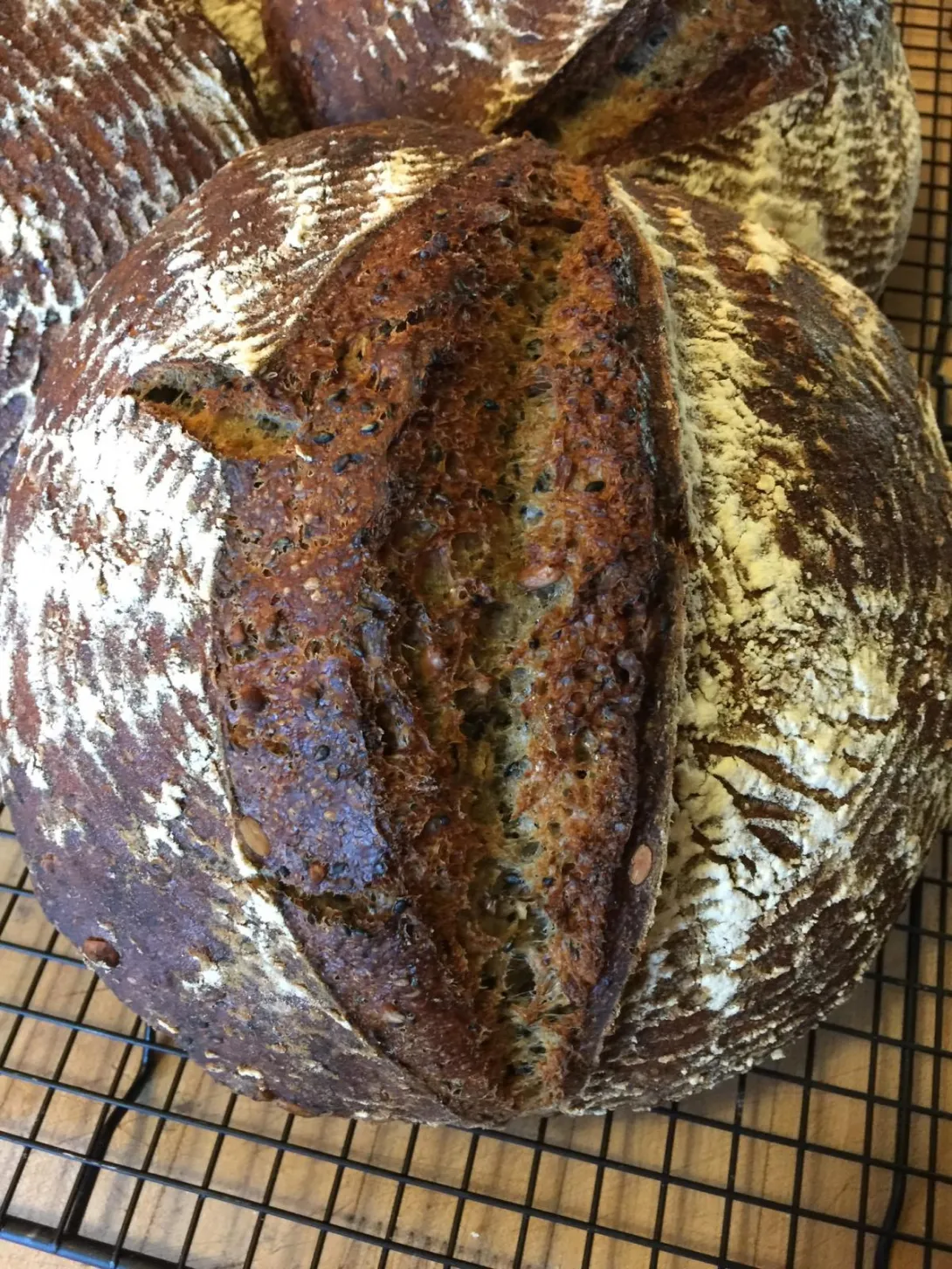Danni3ll3's blog
Gluten Free Flax Bread
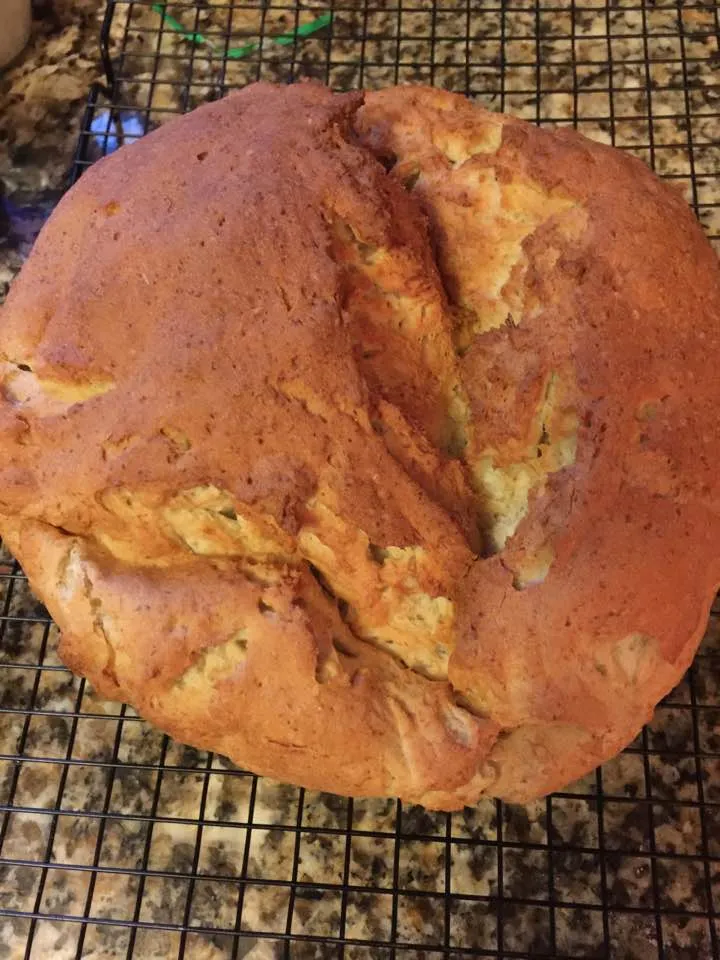
My daughter has rheumatoid/psoriatic arthritis and decided to try going gluten free to see if it would help her pain and fatigue. We have a wonderful gluten free bakery here but things are rather expensive and I found that their rolls went hard after one day. When I did some research on TFL, I came across this recipe for Gluten Free Flax Bread. When the OP said that her family couldn't tell the difference between the gluten free and the regular bread, I decided to give it a shot.
Triple Kamut Sourdough with Toasted Flax
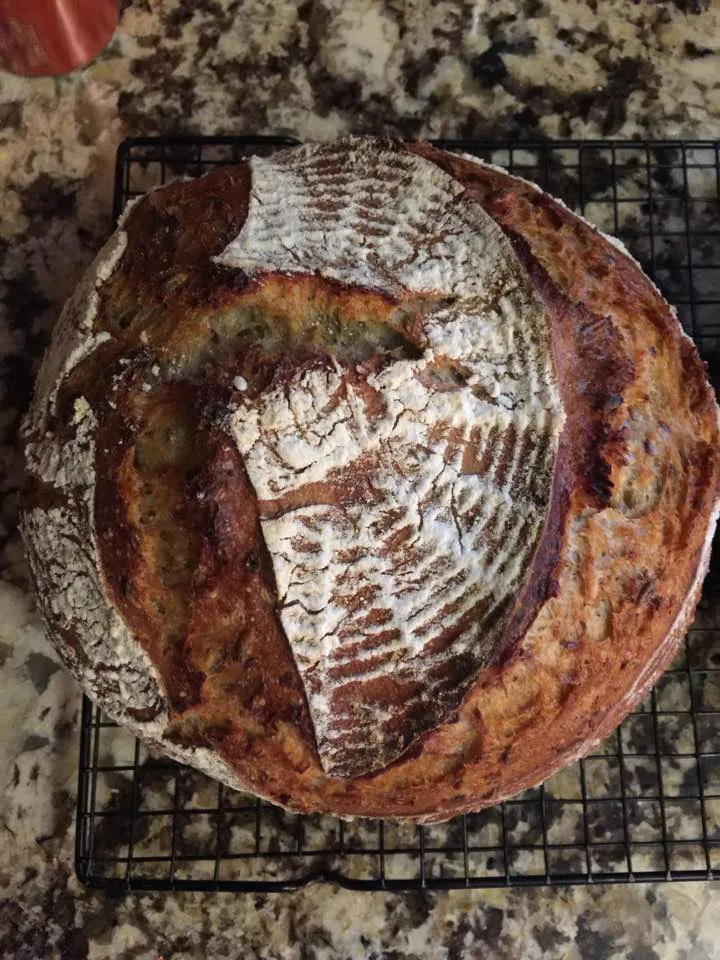
At the Health Food Store, I discovered whole Kamut/khorasan grains so I decided to sprout them and include them in a loaf. I also love the moisture I get from adding porridge flakes to my bread so that got included too as well as whole grain Kamut flour. So here is what I came up with:
Measure out 100 g of Kamut berries and spout them over two days.

Sourdough Fruitcake
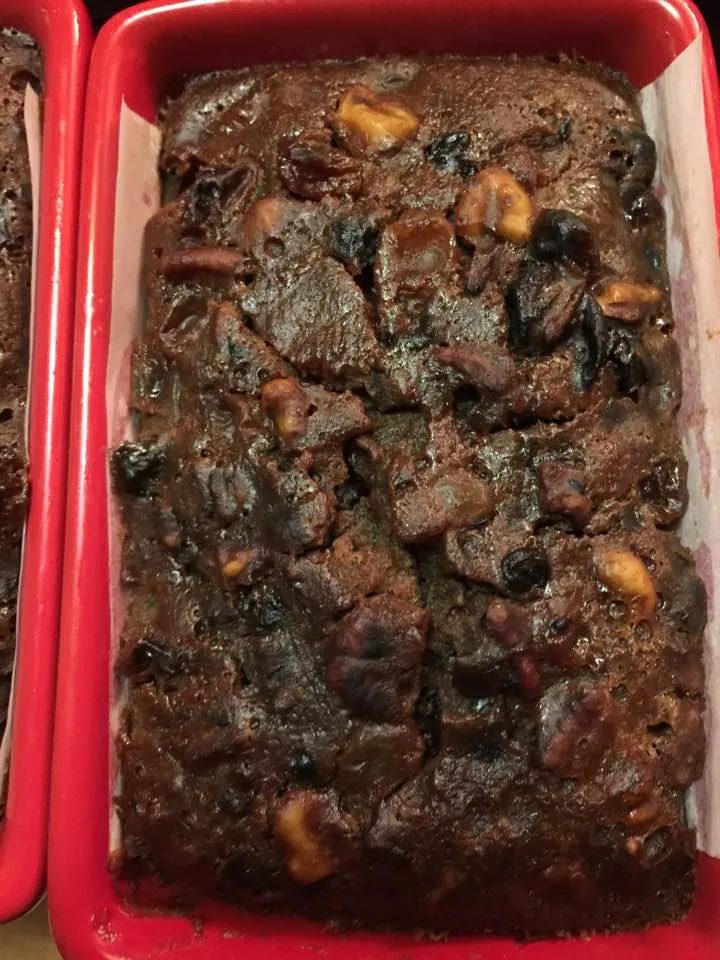
The recipe is one that incorporates sourdough with real dried fruit instead of a bunch of candied pretend fruit. I can't remember how I stumbled on this but it sounded very good to me and not having made fruitcake before, I didn't have preconceived notions so I was open to any idea.
Rene's Rye from Tartine 3
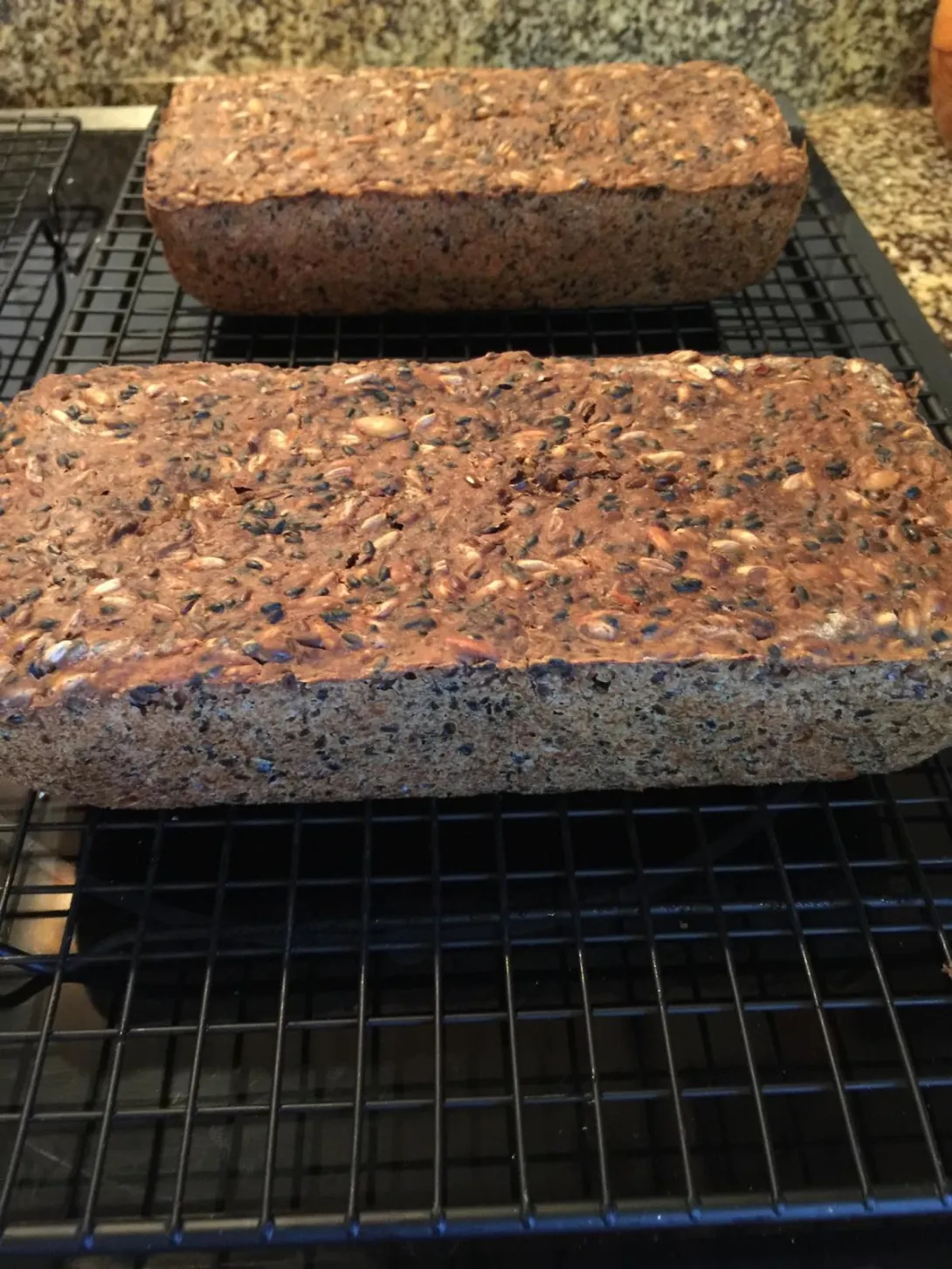
Well, I am not too sure what to think of this bread. It feels a bit like I baked four bricks.
I followed the recipe exactly as written in Tartine 3 except for the baking part where I gradually reduced the baking temperature and covered the loaves for the first part of the bake as per DAB and Cedar Mountain. Oh and I lightly toasted the seeds.
They are now wrapped up in parchment, foil and plastic wrap. I am letting them sit till tomorrow where I will have a taste. Hopefully they taste fine as some are going to the soup kitchen as well.
Sprouted Buckwheat Groats and Seeds Sourdough
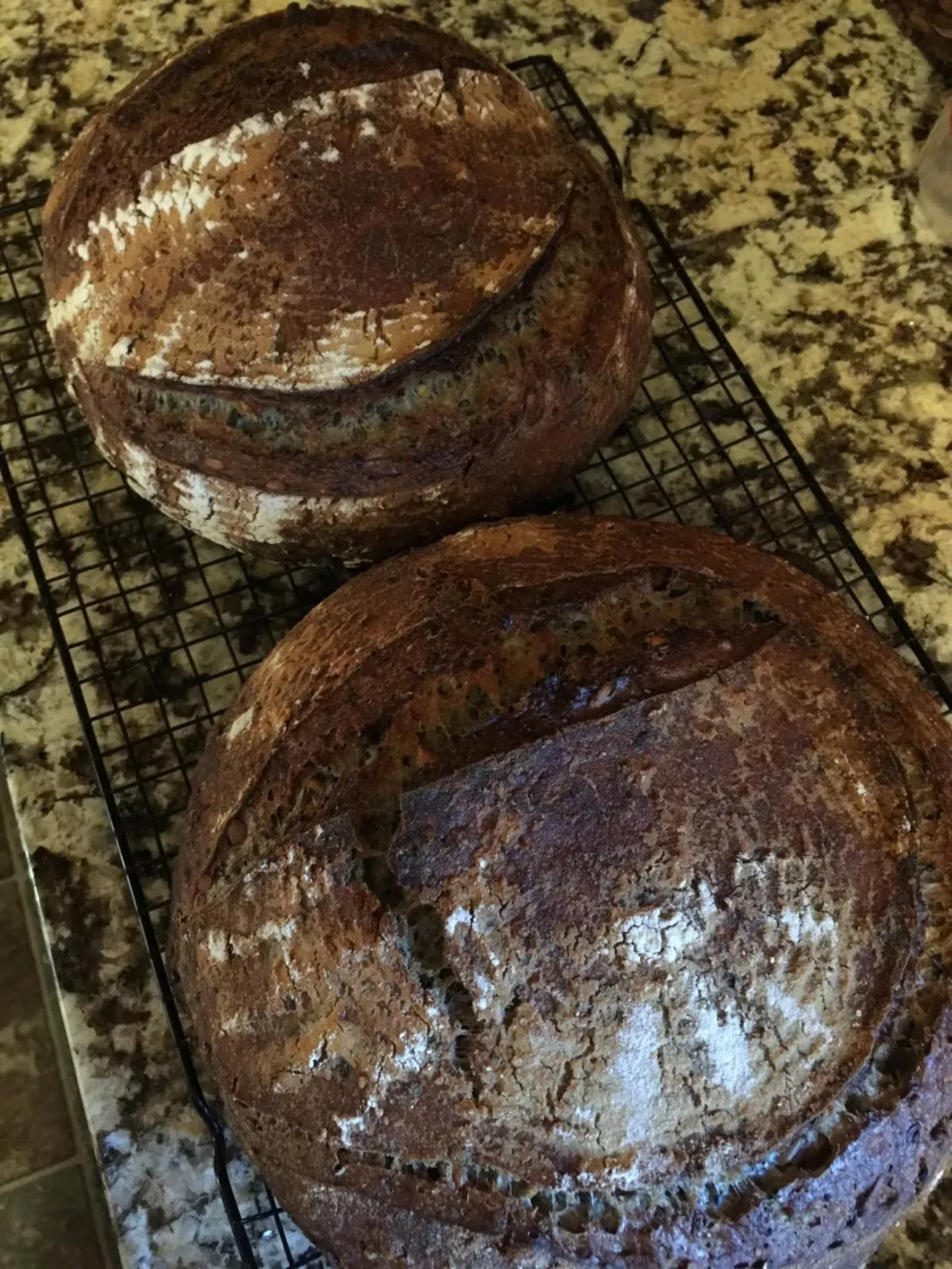
Well this is a redo of last week's bread with a few changes. Unfortunately, I don't feel like this was an improvement.
The recipe is the same as last week with the following changes:
I sprouted the 75 g of Buckwheat groats rather than toasting and soaking them.
I reduced the amount of water by 50 g.
I added 1tsp of toasted sesame oil.
Bulk fermentation was about an hour shorter as the dough rose faster this week.
Proofing in the fridge was longer because I slept through my planned bake time.
Brenda's Seeded Oat Bread
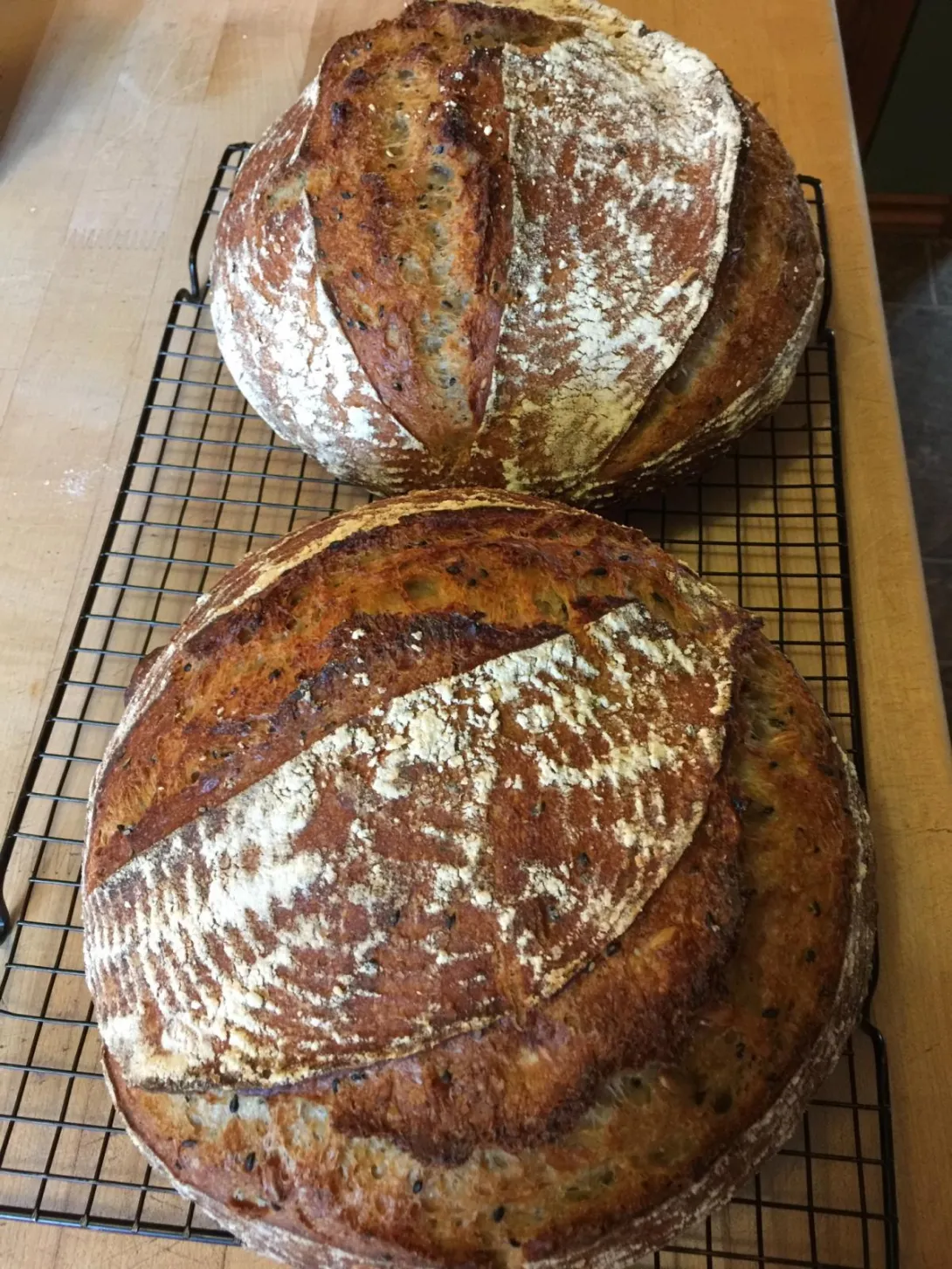
This bread was literally unplanned. I had started doing my builds of levain for this weekend's loaves when my daughter asked if I could make a couple of loaves for a friend that was in need. She wanted something healthy with seeds. So after weighing out the seeds I needed for my other loaves, this is what I came up with.
Levain - I took 30 g of my starter from the second build and fed it 30 g wholewheat, 120 g unbleached flour and 120 g warm water. I let it rise for about 6 hours.
More Overnight Country Brown Variations
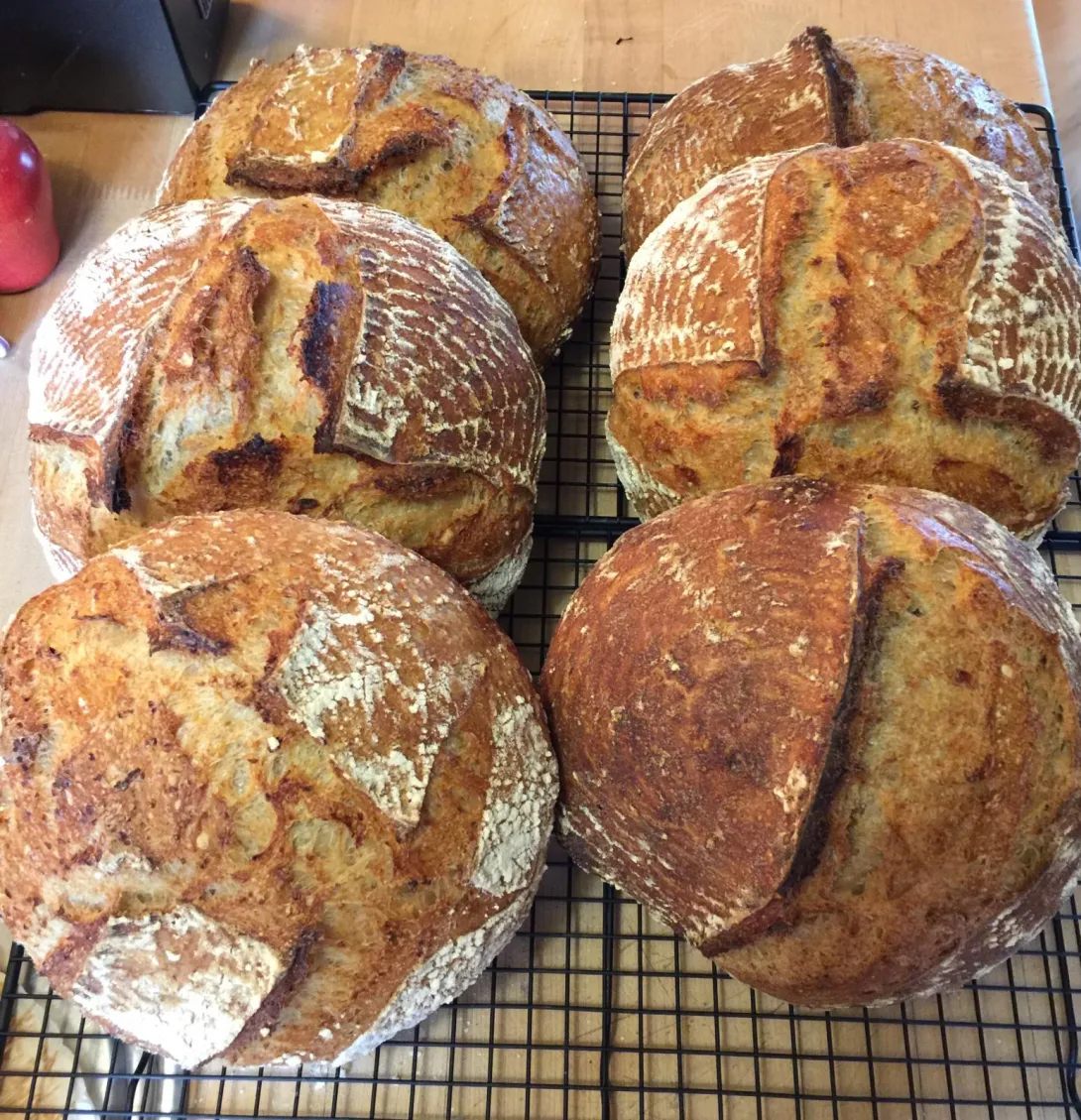
I was very pleased with last week's experiment so I decided to try using a single variety of whole grain flour with the same type of flake or grain. I also made an extra 2 loaves to give away to friends (posting on Facebook earns you people begging for bread. Ha ha!)
